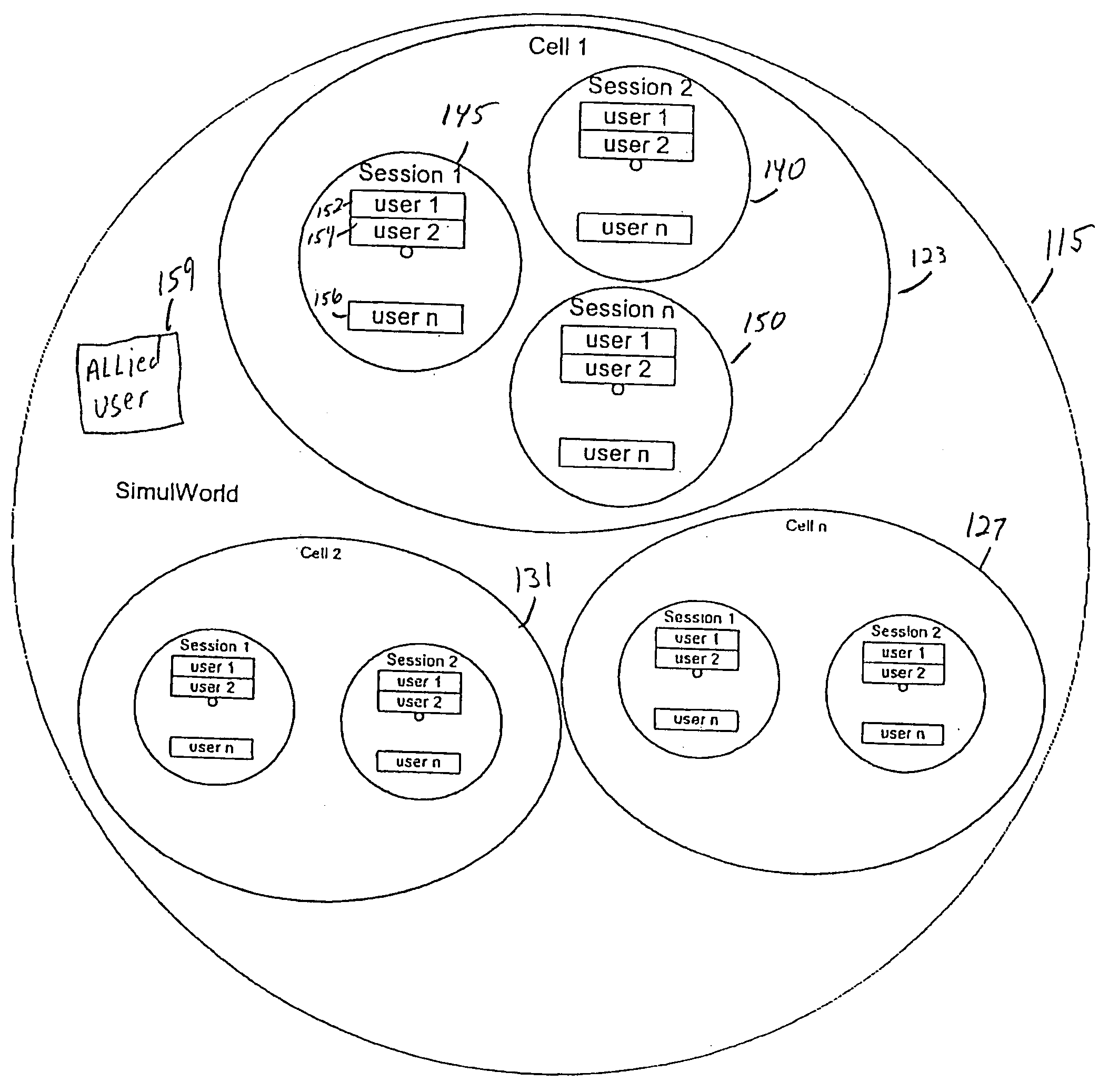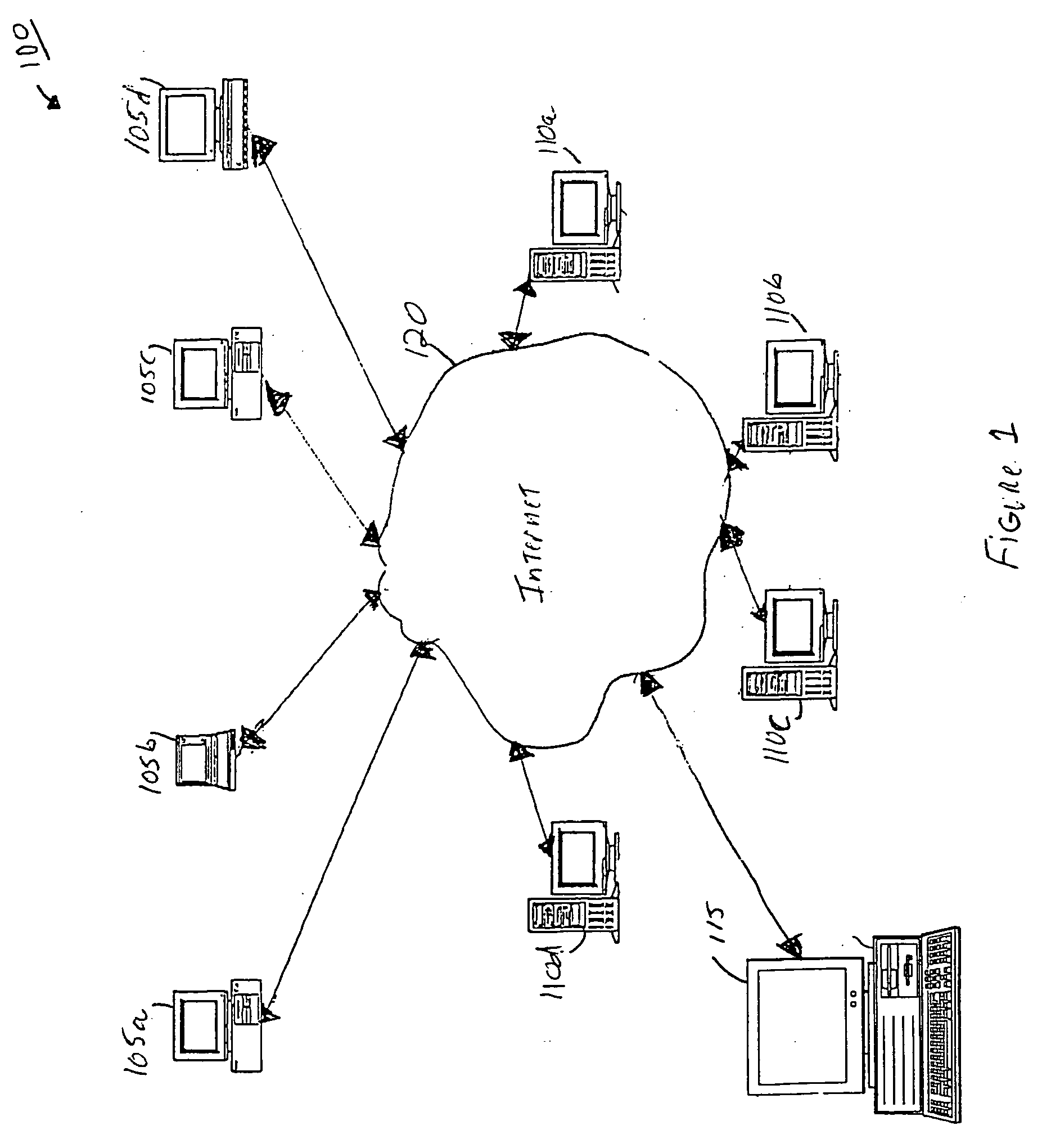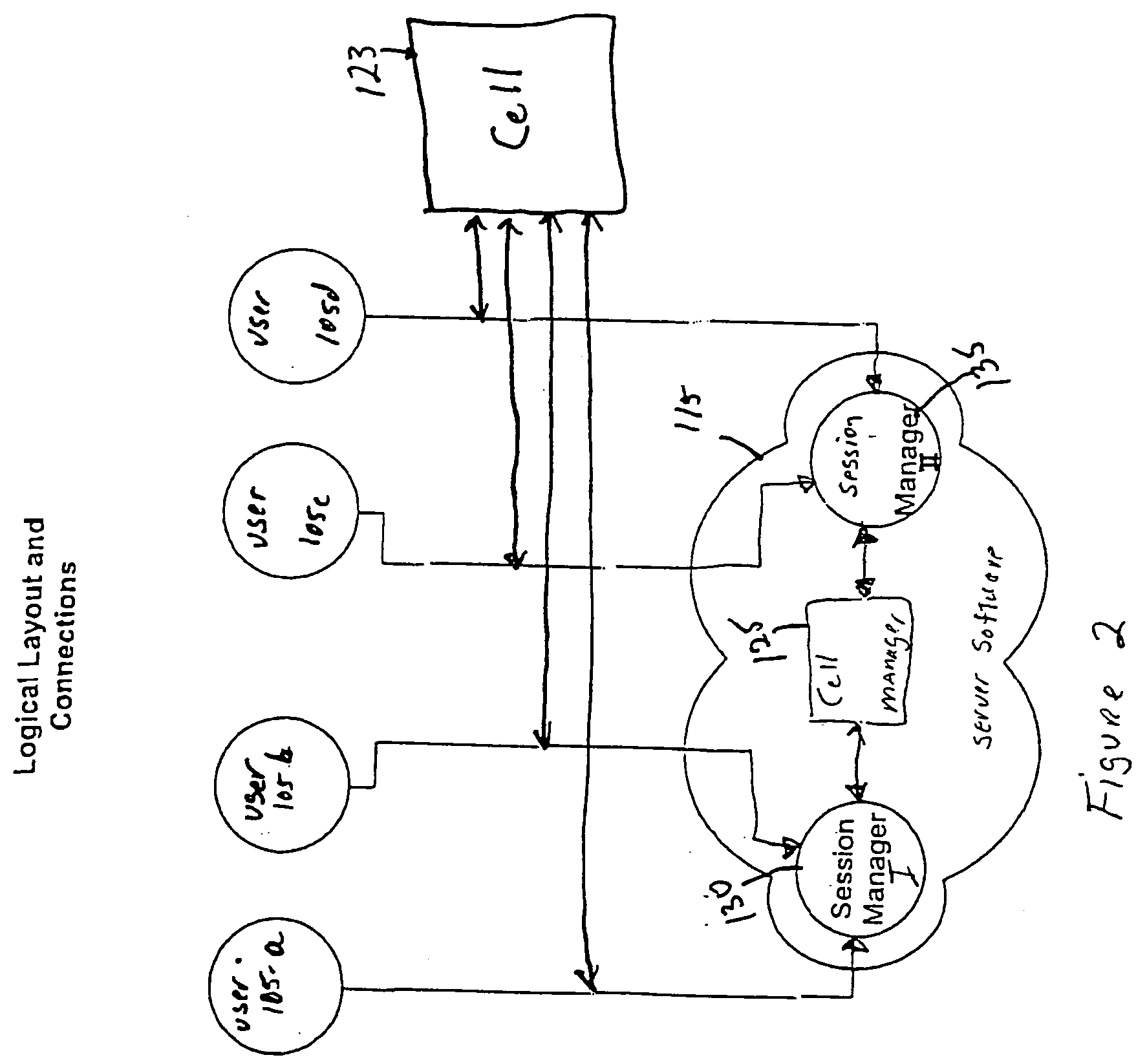Method and system of collaborative browsing
- Summary
- Abstract
- Description
- Claims
- Application Information
AI Technical Summary
Benefits of technology
Problems solved by technology
Method used
Image
Examples
Embodiment Construction
[0022]FIG. 1 illustrates an exemplary system 100 having multiple client program computers, the computers 105a-105d, and multiple network servers, the network servers 110a-110d, and a main server 115. The client program computers 105 and all of the network servers 110 are all bi-directionally connected to the Internet 120. The client program computers 105 and the network servers 110 are typically personal computers that are actually connected to the Internet 120 through a dedicated Internet port or through an Internet service provider (ISP). However, the client program computers 105 may also comprise personal digital assistants (PDAs), Web-equipped cellular telephones, Internet appliances, or other intelligent devices having a processor, memory, and data input / output means.
[0023] The term “client program computer” designates a remote entity that connects to the system 100. In practice a client program, which may or may not be installed and executing on an individual user's computer,...
PUM
 Login to View More
Login to View More Abstract
Description
Claims
Application Information
 Login to View More
Login to View More - R&D
- Intellectual Property
- Life Sciences
- Materials
- Tech Scout
- Unparalleled Data Quality
- Higher Quality Content
- 60% Fewer Hallucinations
Browse by: Latest US Patents, China's latest patents, Technical Efficacy Thesaurus, Application Domain, Technology Topic, Popular Technical Reports.
© 2025 PatSnap. All rights reserved.Legal|Privacy policy|Modern Slavery Act Transparency Statement|Sitemap|About US| Contact US: help@patsnap.com



